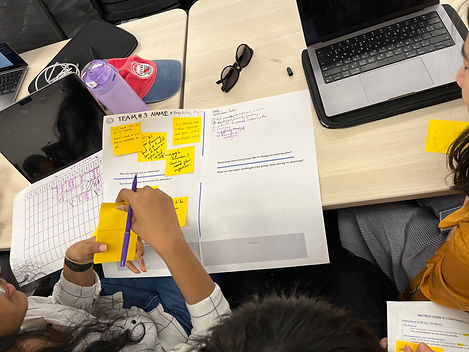The Future of Planning:
AI-Integrated Planning Decision Support System.
Timeline: Apr 2024 - Present
Team: 1 Researcher, 2 Designers,1 Instructor and 2 Mentors
Role: UX Researcher, Project Manager

International Space Station (ISS) astronaut using Playbook on a touch device as part of the Crew Autonomous Scheduling Test (CAST) experiment (Credit: NASA/NASA Johnson Space Center)
Problem Statement
Playbook is a NASA software tool that enables mission planning, scheduling, and execution for human and robotic space missions. Currently, the vast majority of mission planning at NASA is still a highly manual process, involving manual inputs and verifications by dozens of individuals for any given mission. As we venture further into space, the paradigm of mission planning and execution must change from its current state. The recent rise of machine learning and artificial intelligence has inspired interest in how such technologies can be applied to support both mission planners and the plan executors, whether they be astronauts or robots. Therefore, our project aims to create research-supported design concepts for what a hypothetical, AI-driven mission planning and execution interface in Playbook could look like for future deep-space exploration missions.
Solution
We've recently wrapped up the research phase of this project, which presented a novel and niche problem statement for our team. To grasp the full scope of the problem (especially, in the context of AI) and understand our stakeholders' pain points, we followed an open-ended approach. We gathered insights using both unstructured and semi-structured research methods. This allowed us to uncover three major themes and key takeaways, guiding us to develop six potential design recommendations.
Methodology
Preliminary Research and Literature Review
Understand the challenges general people face during planning and rescheduling process.
-
Conducted open-ended unstructured interviews (N=6)
-
Group replanning activity(N=7) and collected participants’ feedback (N=21)
Reviewed research papers and articles on Playbook usage and mission planning to
-
Understand planning process, key features, and planning constraints.
-
Streamline our research process and develop our research questions.


Images are used after the participants consent.
Research Questions
-
What is the mission/critical planning process?
-
What are the challenges of mission/critical planning?
-
How to integrate task constraints into the development of effective mission plans?
-
How can a decision support system, such as AI tools, be utilized to improve the planning, scheduling, and replanning of both contingency and nominal process by offering decision-making support?
Analysed (N=7) subject matter expert Interviews semi-structured Interviews
Wide overview of themes we found
-
Navigating constraints and interdependencies as the strategies for effective mission planning
-
Elevating User Experience: Mission success through user-centered contingency planning
-
Trustworthy and Transparent automation in Mission Planning through Human-AI collaboration
Recommendations
Intuitive UI Design: Incorporate visual cues, drag-and-drop functionality, onboarding tutorials, and a feedback mechanism.
Adaptive Learning Modules: Provide customizable interfaces to meet diverse user needs.
Real-Time Visualization: Implement visualization of downstream impacts, AI suggestions, and automated alerts.
Automated Task Management: Automate task creation, customization, and include a real-time side assistant.
Predictive Suggestions: Utilize historical data for predictions and actionable insights.
Transparent AI Decisions: Ensure transparency with detailed explanations and visualizations.
Designs Coming Soon...

Crew member on NASA Extreme Environment Mission Operations (NEEMO) utilizes Playbook during the undersea mission (Credit: NASA)